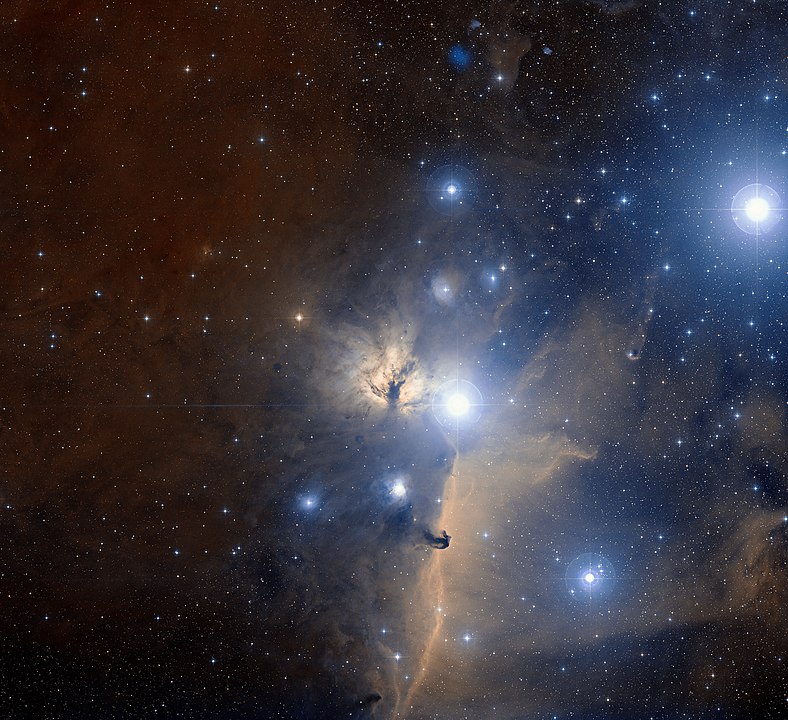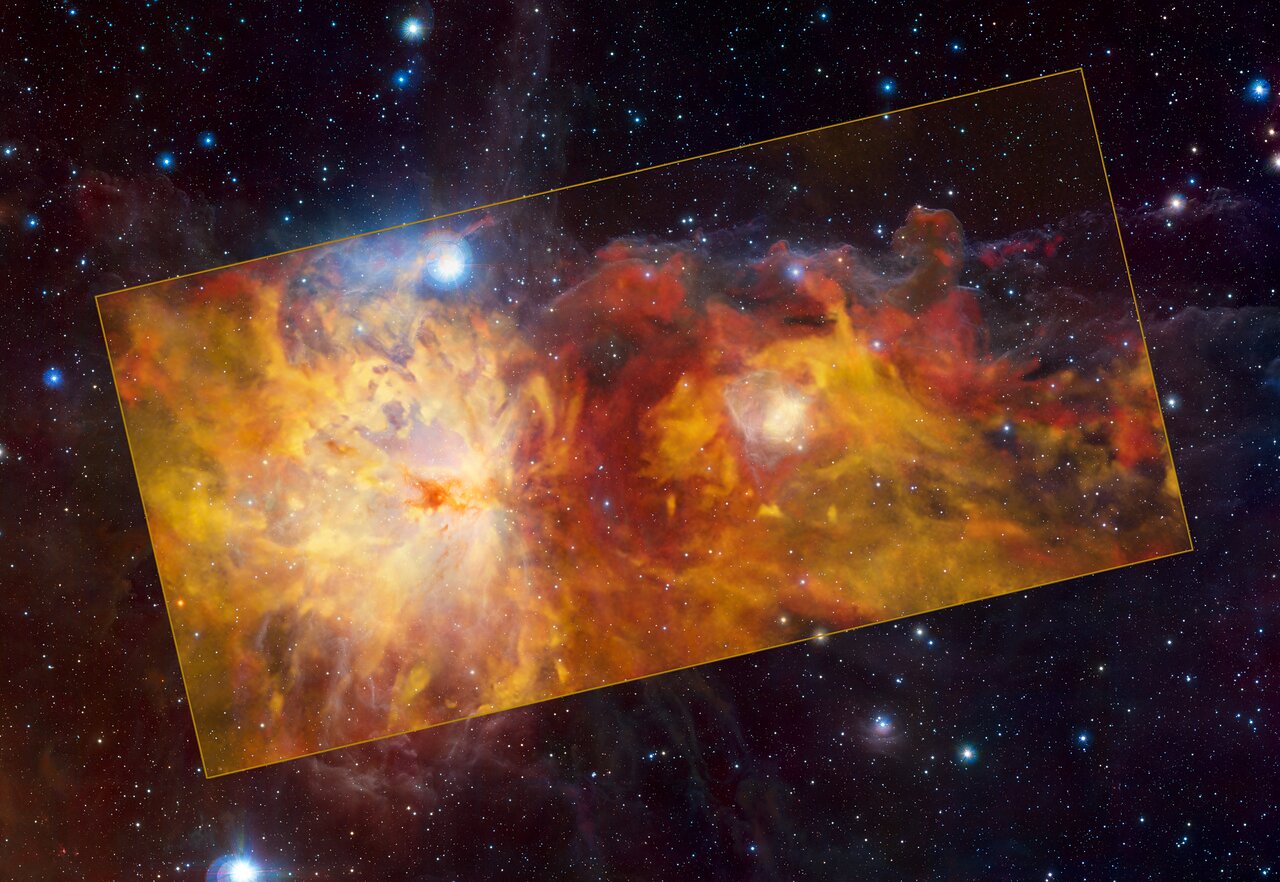The ESO has released some stunning new images of Orion’s Flame Nebula. They’re from a few years ago but are newly processed as part of the Orion cloud complex study. The images have led to discoveries in the often-observed Orion cloud complex.
Astronomers love to look at well-known objects with new telescopes because they always see something new. That’s what happened when astronomers used the new SuperCam instrument installed on the ESO’s Atacama Pathfinder Experiment (APEX.) Astronomers designed the instrument to examine molecular clouds and the star-forming regions in the Orion molecular cloud complex, among other targets.
The image is part of the APEX Large CO Heterodyne Orion Legacy Survey (ALCOHOLS). Though the image is from a few years ago, it was only recently processed and included as part of a newly-published paper.
The paper’s title is “The APEX Large CO Heterodyne Orion Legacy Survey (ALCOHOLS). I. Survey overview,” The lead author is Thomas Stanke. The paper is due to be published in the journal Astronomy and Astrophysics.
The Orion cloud complex is hundreds of light-years across and between 1300 and 1600 light-years away. It’s one of the most active star-forming regions that we can see with the naked eye and holds the closest molecular clouds to the Sun. It contains young, newly-born stars with protoplanetary disks, emission nebulae and reflection nebulae, dark nebulae, and other features. For these reasons, it’s an often-studied area of the sky, an irresistible lure for intellectually curious astronomers and astrophysicists.
As part of their observations, the team behind this work observed the Flame Nebula and other structures in its surroundings. They got good looks at the reflection nebulae Messier 78 and NGC 2071, lit up by nearby stars and other objects like expanding bubbles.

In a press release announcing the study and the new images, lead author Thomas Stanke said, “As astronomers like to say, whenever there is a new telescope or instrument around, observe Orion: there will always be something new and interesting to discover!”
One of their discoveries is a small, spherical cloud that they’re calling the Cow Nebula Globule. Though it appears cometary in structure in optical light, it’s actually a round, possibly spherical cloud of gas. It’s also starless.

But the Flame Nebula (NGC 2024) is a highlight in these new images. It’s about 900 to 1500 light-years away, and Alnitak, the triple-star system at the eastern end of Orion’s Belt, lights it up.

Flame is an emission nebula, which means that the gases are ionized by ultraviolet energy from Alnitak and emit light at different wavelengths. Like the Orion cloud complex of clouds that it’s a part of, the Flame Nebula is an active star-forming region. A cluster of young stars lies in the Flame Nebula’s center, many with protoplanetary disks. But, perhaps sadly, many of those disks may never have the chance to form planets. Hubble Telescope observations in 2021 show that the nearby young stars are eroding many of these disks with their intense radiation.


The Orion Complex is an intricately detailed region of space full of stars and gas and all the interplay between the two. It’s the nearest high-mass star birth region full of young stars and protostars, all fully characterized by multiple surveys, observations, and studies. This study adds more detail to all that knowledge, and the authors hope that future studies will reveal even more. The study’s conclusion says they only “scratch the surface” of what their method can expose.
But for now, we can enjoy the images.
More:
- Press Release: Orion’s fireplace: ESO releases new image of the Flame Nebula
- Study: The APEX Large CO Heterodyne Orion Legacy Survey (ALCOHOLS) I. Survey overview
- Universe Today: Newborn Stars in the Orion Nebula Prevent Other Stars from Forming

